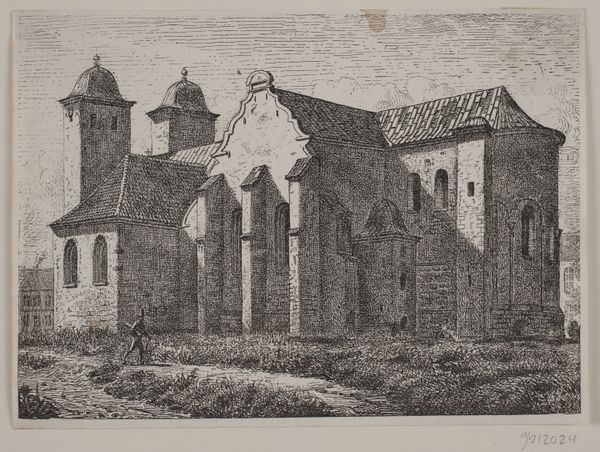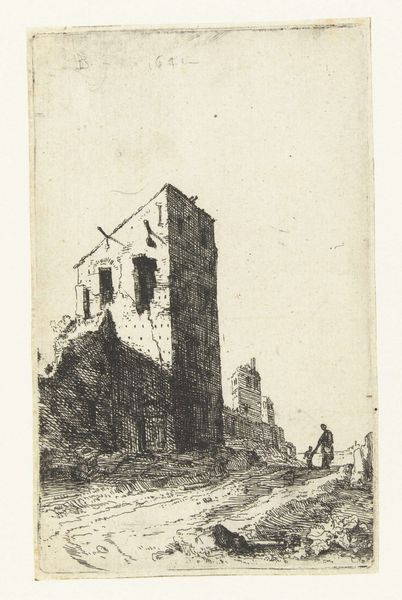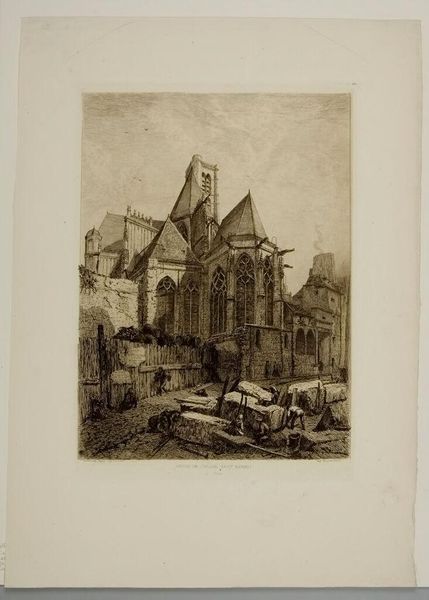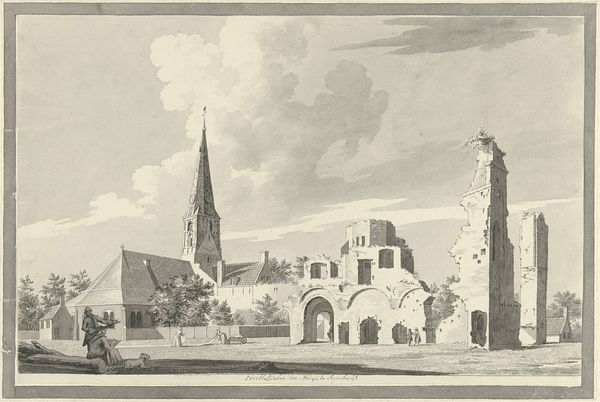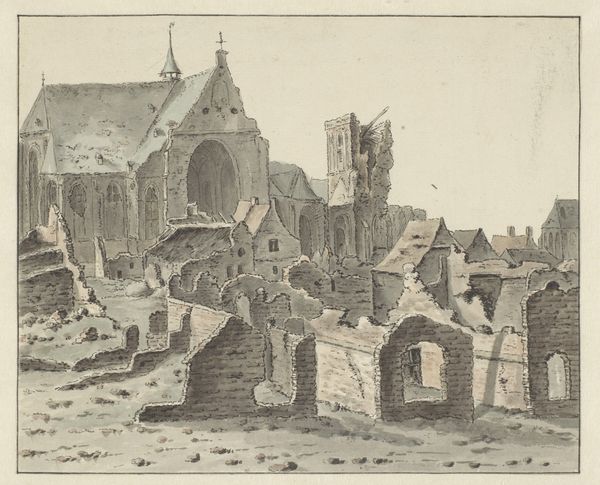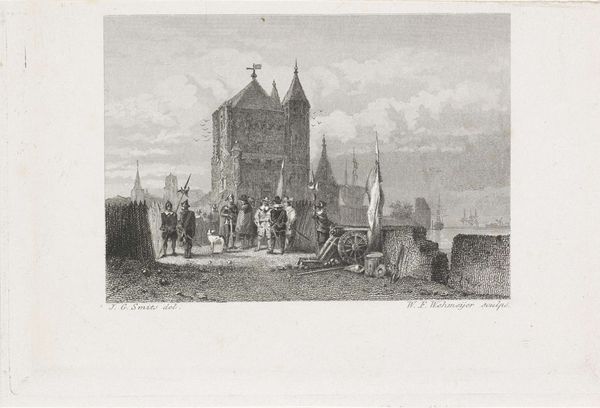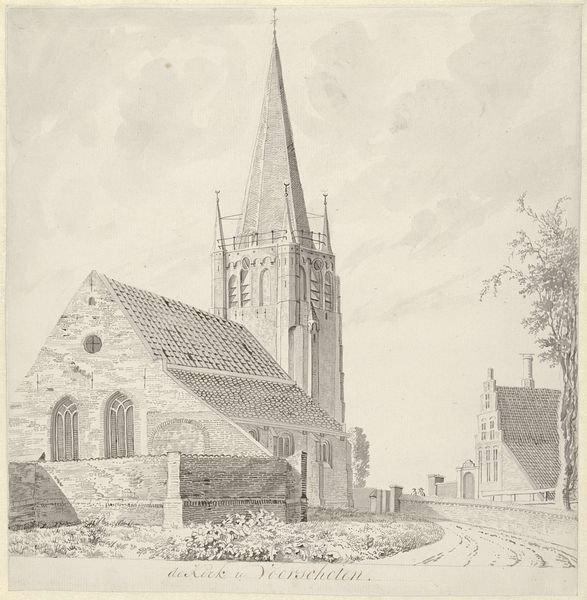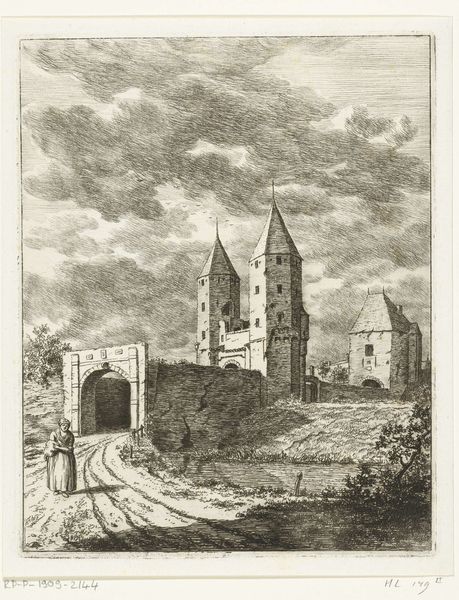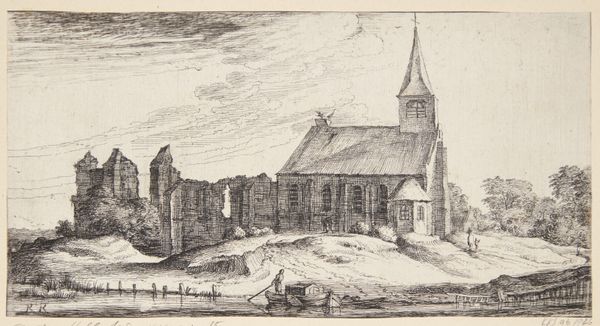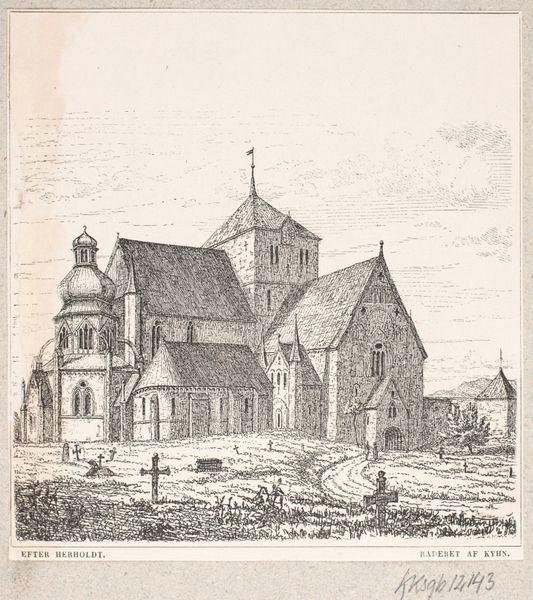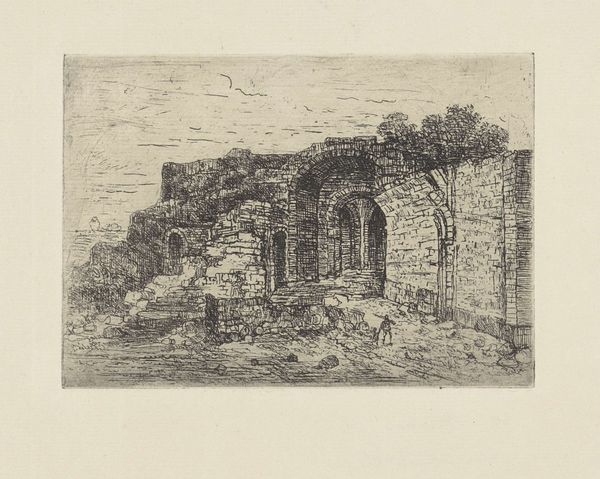
Dimensions: plate: 13.65 × 11.75 cm (5 3/8 × 4 5/8 in.) sheet: 28.26 × 21.59 cm (11 1/8 × 8 1/2 in.)
Copyright: National Gallery of Art: CC0 1.0
F.L. Griggs created the etching, "Castor." Look closely, and you'll see that this wasn't made with traditional painting or sculpting materials, but instead with a metal plate, acid, and ink. An etching is made by drawing an image into a prepared ground on a metal plate, which is then bitten by acid, and finally printed. The etcher's line allows for incredible detail, and here, Griggs uses it to great effect. The rough texture of the dilapidated stone architecture, under a sky full of feathery clouds, are all rendered with careful precision. The image is sepia-toned, and the light catches the edges of the stones, animating the picture. Think about all the labor involved: the quarrying of the stone, the construction of the buildings, and, of course, the artist's own work. These processes, and the social contexts they imply, are all embedded in the image, and help us see the artwork in a new light, challenging distinctions between fine art and craft.
Comments
No comments
Be the first to comment and join the conversation on the ultimate creative platform.
